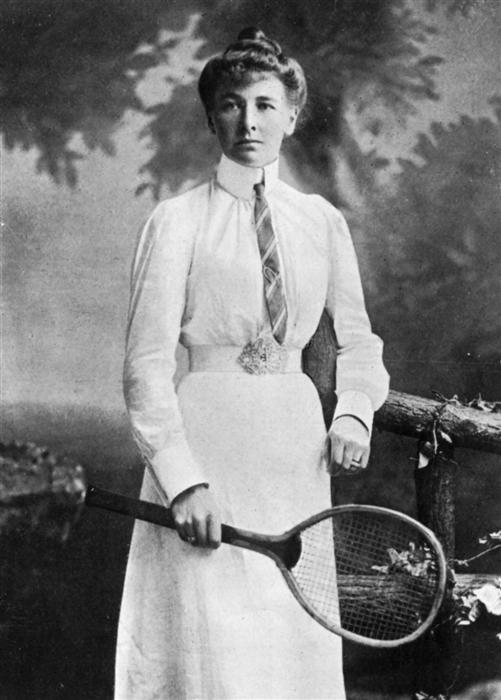In the arena of sports, where every leap, sprint, and strike holds the power to challenge norms and redefine boundaries, women athletes have emerged not just as players but as pathfinders. Their journey, marked by grit and grace, has transformed the tapestry of sports, breaking barriers and shaping history. This 900-word narrative pays homage to these trailblazers, whose stories are not just about sports but about the indomitable spirit of womanhood.
The Early Pioneers: Setting the Stage
The history of women in sports is a chronicle of perseverance against odds. It was not until the late 19th and early 20th centuries that women began to make their presence felt in the world of sports. Figures like Charlotte Cooper, who in 1900 became the first female Olympic champion in tennis, set the stage. These early pioneers defied societal norms that dictated physical activity as unfeminine and unsuitable for women. They weren't just playing a game; they were rewriting the narrative of what women could achieve. Born in 1870 in England, Charlotte Cooper grew up during a time when societal norms were heavily stacked against women participating in sports. The prevailing belief was that rigorous physical activity was unsuitable and potentially harmful for women. Despite these constraints, Cooper's passion for tennis shone through. She began playing tennis at a young age and quickly developed a reputation for her skill and grace on the court.
Her moment of glory came at the 1900 Paris Olympics, an event that marked several firsts. It was the first time tennis was included in the Olympics and, more importantly, the first time women were allowed to compete in the Games. Charlotte Cooper seized this opportunity and entered the tennis competition.
In a display of skill that defied all expectations, Cooper dominated the court. Her powerful serves and volleys, combined with her remarkable agility, left her opponents trailing. She clinched the gold medal in both singles and mixed doubles, becoming the first female Olympic champion in history.
Charlotte Cooper's victory was more than just a personal triumph; it was a watershed moment in the world of sports. She broke through the barriers of gender bias, proving that women could compete and excel at the highest levels of athletic competition. Her success challenged the misconceptions about women's abilities in sports and paved the way for future generations of female athletes.
Her legacy extends beyond her Olympic medals. Cooper was a five-time Wimbledon champion, a feat that further cemented her status as a tennis legend. But perhaps her most significant contribution was the example she set – a beacon of inspiration for women fighting for their rightful place in the world of sports.
Rising Through the Ranks: The Mid-20th Century
The mid-20th century saw a surge in women's participation in competitive sports, thanks to increased advocacy for women's rights and equality. Despite facing challenges such as lack of funding, inferior facilities, and limited opportunities, women athletes like Babe Didrikson Zaharias excelled in multiple sports, including golf, basketball, and track and field. They didn't just win games; they won respect and recognition for women in sports. Figures like Wilma Rudolph, an African-American sprinter, overcame childhood polio to win three gold medals in track and field at the 1960 Rome Olympics, inspiring countless others. These years were marked by an increasing visibility of women in various sports, challenging and gradually shifting the societal perceptions about women’s capabilities. Their remarkable achievements laid the groundwork for future advancements in women's sports, forging a path toward greater inclusion and equality. This era wasn't just about individual success; it represented a collective movement of women asserting their right to compete and be recognized on the global sports stage.
Title IX: A Game-Changer

Title IX, enacted in 1972, stands as a monumental game-changer in the history of women's sports, a legislative cornerstone that reshaped the landscape of athletic opportunities for women in the United States. This federal civil rights law, part of the Education Amendments Act, declared, "No person in the United States shall, on the basis of sex, be excluded from participation in, be denied the benefits of, or be subjected to discrimination under any education program or activity receiving Federal financial assistance."
Prior to Title IX, opportunities for women in sports were limited, with significant disparities in funding, facilities, and exposure compared to men's sports. Female athletes faced numerous barriers, from insufficient training resources to a lack of scholarship opportunities. Title IX dramatically shifted this paradigm. By mandating equal opportunities, it opened doors for millions of girls and women to participate in sports at all educational levels.
The impact of Title IX was profound and multifaceted. It led to an exponential increase in the participation of women and girls in sports, from school-level teams to collegiate athletics. This surge wasn't just in numbers; it was a cultural shift that began to challenge and change long-standing gender stereotypes in sports and beyond. Women's athletic programs received more funding, better equipment, improved training facilities, and greater access to high-level coaching, leveling the playing field in a literal sense.
Moreover, Title IX's influence extended beyond the sports field. It played a crucial role in promoting gender equality and empowering women, providing them with opportunities to develop leadership skills, discipline, and self-confidence. The law has been instrumental in advancing women's rights, not just in sports but in broader societal contexts, influencing attitudes towards women's capabilities and roles.
The Modern Icons: Diversifying Excellence
The modern era has witnessed the rise of women in sports who are not merely participants but icons of diversifying excellence, transcending boundaries and setting new standards. Athletes like Serena Williams in tennis and Simone Biles in gymnastics have not only dominated their sports but have also become powerful symbols of strength and resilience. Williams, with her unparalleled record in Grand Slam tournaments, has redefined tennis with her powerful play and unwavering determination. Similarly, Biles, with her gravity-defying gymnastic routines, has pushed the limits of what was thought possible in the sport.
These modern icons have brought a new dimension to their respective sports, combining exceptional skill with unmatched grace and elegance. They are role models for millions, showing that with hard work and determination, barriers can be broken and new heights achieved. Their achievements are not just about the medals and records; they represent a broader narrative of empowerment and change, inspiring future generations of female athletes to pursue their dreams with conviction and courage.
Breaking Stereotypes: The New Narrative
Women in sports have continuously shattered stereotypes. They have shown that strength and femininity are not mutually exclusive. Athletes like Ronda Rousey in mixed martial arts and Danica Patrick in auto racing have ventured into domains traditionally dominated by men, proving that talent knows no gender. They are not just breaking barriers; they are redefining the parameters of sports.
The Impact Beyond the Field
The impact of women in sports extends far beyond the boundaries of the field, court, or gym. These extraordinary athletes have not only carved out a place for themselves in their respective sports but also influenced broader societal changes, serving as catalysts for progress and equality.
Women athletes have become powerful role models, inspiring generations of young girls to pursue their dreams with confidence and determination. Their success stories teach valuable lessons about perseverance, discipline, and the importance of setting and achieving goals. By breaking barriers in sports, these women have also challenged gender stereotypes and opened up discussions about equality in other spheres of life.
Moreover, many female athletes have used their platforms to advocate for social justice issues. They have raised awareness about important causes, from gender and racial equality to mental health and environmental sustainability. Their voices have a global reach and can mobilize communities and inspire change in ways that transcend their athletic achievements.
Their influence is also evident in the economic realm. The growing popularity of women's sports has attracted sponsors and increased media coverage, contributing to the commercial success and viability of women's leagues and events. This, in turn, has helped challenge the notion that women's sports are less entertaining or profitable than men's.
The Ongoing Struggle for Equality
Despite significant progress, the struggle for equality in sports continues. Issues like the gender pay gap, media representation, and access to resources persist. The fight that began with the early pioneers is far from over. Women athletes today are not just competing; they are advocating for a level playing field, in every sense.
Celebrating Achievements, Forging the Future
As we celebrate the achievements of women in sports, we also look forward to a future where gender does not define or limit athletic potential. A future where the next generation of women athletes can compete on an equal footing, unfettered by the constraints of the past.
The story of women in sports is a narrative of resilience and revolution. It is a testament to the undying human spirit that refuses to accept limitations and constantly seeks to transcend them. As we recount the tales of these extraordinary women, we don't just chronicle the history of sports; we narrate the saga of women's relentless quest to break barriers and shape their own destinies. Their journey continues, and with each stride, leap, and swing, they are not just scoring points; they are scoring victories for women everywhere.








